LG's Odin chip to soon go into mass production
More than one year after rumors about LG entering the chipset business started coming the company's 8-core Odin chip is about to enter mass production. As you may remember, the chipset will be based on ARM's big.LITTLE architecture with four Cortex-A15 cores using and four low-powered Cortex-A7 cores. The whole thing should utilize 28 nanometer manufacturing process
According to reports in the Korean media, even though the SoC isn't too far away from entering mass production, the LG G3 won't be rocking it. In fact, rumors have it LG is intends to use Odin to power its more budget offerings like the L-series.
LG is said to be partnering with TSMC, the same chip maker who is working on the Apple's A8 processor. Odin is rumored to be available in both quad-core and octa-core versions. The quad-core version of the chipset will allegedly pack an ARM Mali-T604 GPU. The octa-core one on the other hand, is said to sport ARM’s latest Mali-T760 GPU.
Later last year, the first benchmarks of the octa-core version of Odin surfaced. They suggested the chip was quite a performer, even though it was clocked at low speeds - 1GHz maximum.
Update 5 for Jolla’s Sailfish OS goes live with new features
 Jolla released update 5 for its Sailfish OS. Dubbed Paarlampi, the
new firmware brings new functionality to the OS, and addresses quite a
few of its shortcomings.
Jolla released update 5 for its Sailfish OS. Dubbed Paarlampi, the
new firmware brings new functionality to the OS, and addresses quite a
few of its shortcomings.Version 1.0.5.16 of Sailfish OS allows Jolla smartphone users to two-way sync Exchange contacts, as well as set a default account for sending emails. MMS functionality is finally brought to the OS, including the ability to receive carrier access point settings OTA.
Additionally, EXIF data is now stored in photos captured with Jolla’s camera. Users can also save GPS coordinates of the images they have captured with their handset.
Swipe to close gesture, visual interaction hints, and keyboard sounds wrap up the list of new features brought by the update. The gestures and the keyboard sounds can be tweaked in the device’s settings.
Bug fixes and improvements are plentiful too. The most notable one includes a security fix which addresses the OpenSSL “heartbleed” bug which set the web and the social networks on fire over the past week.
Android runtime has been optimized too. The new OS version allows for proper update support for installed apps, as well as improved 2D/3D performance among many others.
You can check out the full Sailfish Paarlampi update changelog by hitting the source link below.
Google releases official Project Ara Module Developers Kit
Google officially released its first Project Ara Module Developers Kit (MDK). The MDK gives a better understanding of the platform and provides developers with guidelines for creating components for the modular smartphone.
The MDK documentation gives us a glimpse at the three different Ara skeleton sizes – mini, medium and large. As expected, larger skeletons will be able to accommodate more Ara modules than smaller ones. Google will be the sole provider of Ara skeletons for the time being.

Project Ara devices will be available in different physical layouts. Users will be able to choose from touchscreen-only setups, as well as options with physical QWERTY keyboard, or even a number pad.

In order to ensure uniformity in Ara devices’ basic functionality, the MDK features guidelines for the most common modules such as processors, display units, Wi-Fi chips, batteries, etc. They cover even the physical appearance and measures of the modules. Third party add-ons will not need to adhere to the guidelines.
Google plans to release a series of Ara MDK releases this year, and hold a series of Developers Conferences (the fist one kicks off next week). The first Ara phones could hit the shelves as early as the first quarter of next year alongside a dedicated marketplace for additional modules. As we know already, Google targets a low entry price tag for the devices.
AUO makes highest resolution AMOLED screen to date
 AUO
is about to debut their 513ppi AMOLED display made for smartphones. The
unit boasts a QHD (2560x1440) resolution, which is supposed to provide
an amazing viewing experience.
AUO
is about to debut their 513ppi AMOLED display made for smartphones. The
unit boasts a QHD (2560x1440) resolution, which is supposed to provide
an amazing viewing experience.The display they are showing off is a 5.7” AMOLED screen that measures 0.57mm in thickness. AUO hasn’t only worked on the screen’s resolution, however, but boasts that touchscreen usability will be improved as well as they’ve implemented a unique design that allows for 10-point touch support for, you know, in case you want to use both hands or feet to interact with your smartphone.
AUO also plans on releasing some products for smartwatches as well: they made mention of a 1.6” AMOLED display for wearable tech that’s in development. The benefit of OLED tech for smartwatches is a significant selling point as AMOLED displays put less of a strain on battery life.
In addition to their portable tech screen aspirations, AUO will soon show off their curved, 4K LCD TV display units and automobile display units with wide viewing angles. But the real star of the show is the QHD AMOLED display.
With battery life an ongoing issue with the newest crop of smartphones having larger than life displays, AMOLED units provide some much needed relief. Is anyone excited about potentially rocking a QHD unit on their upcoming smartphone? Or do you think it’s all a numbers game at this point, and will only believe it when you see it in person?
Microsoft to release two GDR updates for WP8.1 this year
Microsoft separates Windows Phone 8 updates into major and minor ones – so far we've seen one major (8.1) and three minor ones (GDR 1, 2 and 3). The company is reportedly planning at least two GDR updates for WP8.1 this year.That's wholly unconfirmed for now, but a 3D Touch system is a possibility. We heard the first murmurs about it last year – it's essentially Samsung's Air Gestures from the Galaxy S and Note devices, at least that's what the first rumor made it sound like.

Another possibility is evolving Nokia's Refocus app (which got many imitators in this flagship generation). The rumor mill is talking of a dual-camera setup to create Lytro-like refocusable photos with just one shot. HTC tried just that and the results were not perfect.
The first of the GDR updates for Windows Phone 8.1 might come in the middle of this year (June/July) and the second one towards the end (November/December).
Nikon introduces 1 J4 interchangeable lens camera with focus on speed
Nikon unveiled a new addition to its interchangeable lens mirrorless cameras dubbed 1 J4. According to the company this is one of the fastest interchangeable lens compact cameras for continuous shooting with autofocus tracking currently on the market.
The compact shooter is said to come with many of the features recently introduced with the company’s more advanced 1 V3 model, except in a more affordable package.
The J4′s Expeed 4 processor allows for burst shooting at 20fps with continuous autofocus, and 60fps if you select a fixed focus point. Its 18MP CX-format sensor features an AF system that has 171 contrast and 105 phase detect points, which can focus on almost any area of the frame. Video can be recorded at 1080p@60fps, and at 720p@120fps, while the ISO range is 160 – 12800 for low-light environments.
Otherwise, the camera features an all-aluminum build and has a 3″ touchscreen display, and Nikon has moved the storage on the 1 J4 down to a microSD card slot in order to keep the size down.
The Nikon 1 J4 camera will be available in white, silver, black and orange, and will also come with accessories including an underwater case and camera flash. Pricing and availability are yet to be announced.
Ineda Systems develops ‘Dhanush’ chip for wearable devices
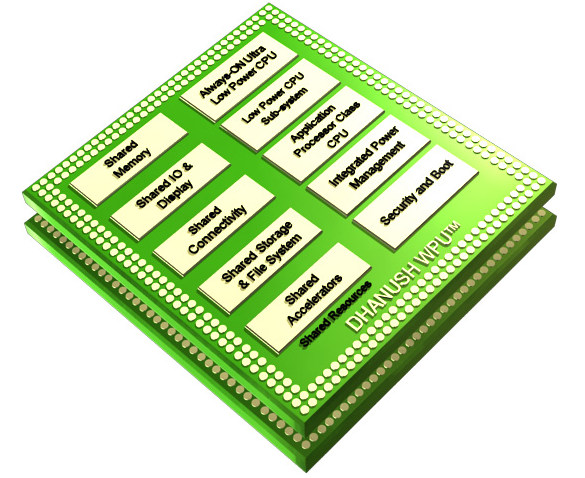
Ineda Systems has announced that it is developing a low power SoC (system on a chip) for wearable technology and Internet of Things. The Hyderabad based start-up revealed prototype of its SoC which is dubbed as Dhanush however, the start-up is calling these SoC as Wearable Processing Unit (WPU).

According to Ineda Systems, Dhanush consumes around 10 times less power than processors used in wearables today thereby enabling 30 days of always-on battery life. It is designed for an array of wearable devices like fitness bands, smart watches, glasses, athletic video recorders as well as Internet of Things.
Dhanush family of WPUs will be powered by the company’s Hierarchical Computing architecture, which is designed to enable multiple CPUs to run independently or together, depending on the tasks or applications they are running, said the company in a press release .The architecture is designed to ensure that each task gets the optimal amount of power they need at the lowest power consumption.

In 2013, Intel had announced its range of SoC billed as Quark that were also aimed at wearable devices. We all know that the year 2014 is attributed to be a year of wearable technology devices. In fact, a latest ABI Research estimates that manufacturers will sell around 90 million wearable devices like smartwatches, fitness activity trackers and products like Google Glass in 2014.
Samsung rebrands its SD card lineup to match SSDs
Samsung has seen some great success with its 840 PRO and EVO series of SSD drives, so much so that it’s decided to rebrand its microSD and SD cards to match that nomenclature.
The new Standard, EVO, and PRO cards from the Korean manufacturer will feature easy to distinguish colors which should help consumers in differentiating between the features and capabilities of the different classes.
Speaking of differences, the company has released a table that fully illustrates the new lineup:

As shown, the PRO models offer impressive transfer speeds, which could be useful for high throughput applications and 4K video recording. Video and photography enthusiasts will especially be drawn to this later category.
Samsung has specified that it has released the new naming scheme to make it easier for customers to differentiate between available varieties of SD cards, as the traditional Class rating system can be confusing to the average consumer.
What do you think? Will color-coding and naming their microSD and SD cards help Samsung sell more units?
SK Hynix develops 128GB DDR4 RAM module
South Korean chipmaker SK Hynix has announced that it has developed the industry’s most advanced double data rate 4 modules with 128 GB of capacity.
The new DDR4 modules are based on Through Silicon Via (TSV) technology and will significantly improve speeds and efficiency. TSV also allows the dynamic random access memory – popularly known as DRAM – to be connected with higher electrical efficiencies.
According to the manufacturer, the 128GB DDR4 module can reach speeds of 2,133 megabits per second as compared to DDR3′s 1,333 Mbps. Furthermore, it consumes less power as it works on 1.2 volts, while its predecessor was designed to run on 1.35 volts.
The mass production of the new 128GB DDR4 RAM model is expected to begin by the first half of 2015.
Twitter acquires Android Lockscreen app maker Cover
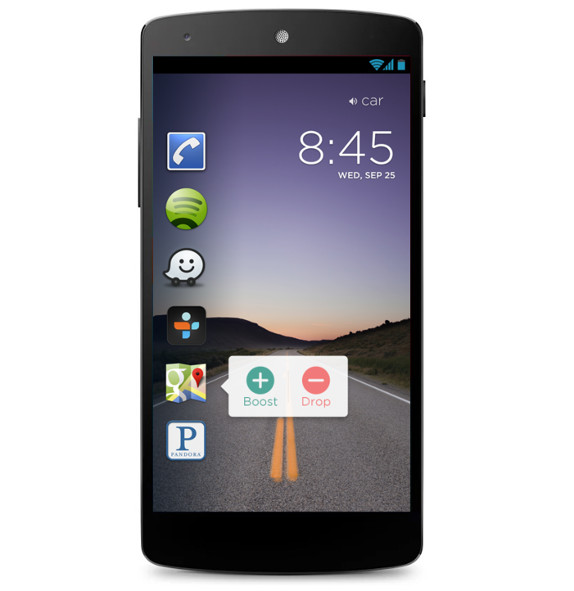
Twitter has acquired Cover, creators of Android lockscreen app Cover Lock Screen. The app was launched back in October last year and still remains in beta. It lets you set number of lockscreens for different context such as home, in the car, at work, and when you’re out that changes depending on time or location. The company has added a lot of features since it launch. It recently updated the app with boost and drop apps by long-pressing on individual app icons and improvements.
Acquiring the Android lockscreen app creators could mean that Twitter might also release a lockscreen app like Facebook Home. We can also expect something completely new from Twitter. Cover had raised $1.7 million in funding, notes TechCrunch. Both these companies did not disclose the final amount of the deal.
Commenting on joining Twitter, the creators of Cover on their official blog, said
It’s been an incredible journey, a journey that we’re excited to announce is taking a turn today as we bring the Cover team to Twitter to take these ideas even further. Twitter, like Cover, believes in the incredible potential of Android. They share our vision that smartphones can be a lot smarter — more useful and more contextual — and together we’re going to make that happen. We’ll be building upon a lot of what makes Cover great, and we’re thrilled to create something even better at Twitter.Cover has promised that Lock Screen app will be available in the Play Store for now and they will let the users know regarding any updates or changes.
OnePlus One to come with 2.5GHz Snapdragon 801 and 3GB RAM
OnePlus One is an upcoming smartphone from a Chinese manufacturer OnePlus. Most of the OnePlus folks are from Oppo and since they are from one of the globally recognized Chinese smartphone manufacturers, a lot of people from the tech community are expecting the OnePlus One smartphone to make a splash.
OnePlus has been teasing their smartphone for a long time now, but they haven’t revealed the phone in one piece. They have been giving out bits and pieces of information about the smartphone. Initially, they claimed that the device will be powered by Snapdragon 800 and will come with 2GB RAM. But now, they have announced that the OnePlus One smartphone will come with a more powerful Snapdragon 801 SoC (the same one which is found in Galaxy S5) clocked at 2.5GHz and 3GB RAM.
According to their official forum post, the specifications of the OnePlus One smartphone are as follows
- 5.5″ JDI 1080p display
- Snapdragon 801 (MSM8974AC – Quad-core at 2.5GHz)
- 3100+mAh battery (non-removable)
- Sony Exmor IMX214 6-Lens 13MP camera
- 5MP Front-Facing camera
- 3GB of RAM
- 16GB & 64GB Variants
- Stereo Speakers
- StyleSwap Covers – Multiple materials/textures
- Single-SIM card
- Global LTE
- GSM Only
- Something better than pre-orders
- No front branding
- 2 year CyanogenMod support
OnePlus have plans to take the veils off their flagship smartphone – OnePlus One on April 23. Lets see what we get.
Samsung SM-T800 specifications leaked – 10.5inch AMOLED tablet
Samsung is long said to be working on a AMOLED display tablet and there hasn’t been an official announcement yet. There have been rumors about a 7inch AMOLED display in the works, but now, SamMobile has posted about the specifications of a 10.5inch AMOLED display tablet from Samsung.
The model number – SM-T800 corresponds to Samsung’s upcoming 10.5inch WiFi tablet and it is rumored to be coming with a 10.5inch Super AMOLED display. The 10.5inch display will have a resolution of 2560×1600 pixels and like the recent flagship tablets, it is expected to be powered by the latest Snapdragon 801 SoC. It will also come with 2GB RAM. Like the recent Samsung smartphones, it will come with Android 4.42 KitKat out of the box.
Its other specifications include a 8MP rear camera and a 2MP front facing camera. There will be 16/32/64GB variants and it will come with a microSD card slot. The Samsung SM T800 will have a 7900mAh battery and come with Samsung’s latest Ultra Power Saving mode. Following the recent trend of Samsung products – there will be two variants – Snapdragon variant for the LTE markets and Exynos variant for other markets.
Samsung Galaxy Ace Style with 4-inch display, Android 4.4 announced

It is not clear if Samsung plans to sell the dual SIM variant of the Ace Style in some markets like they did for Galaxy Ace 3.
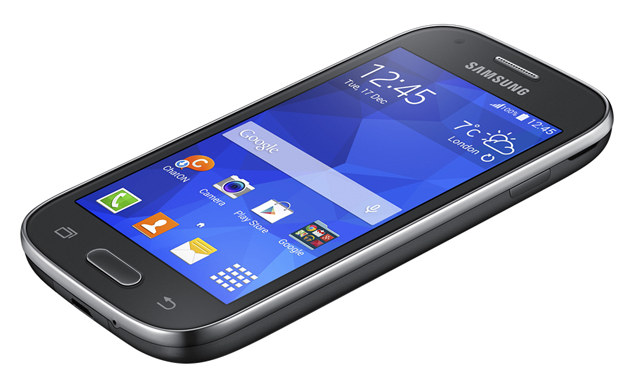
Samsung Galaxy Ace Style specifications
- 4-inch (480 x 800 pixels) capacitive touch screen display
- 1.2 GHz dual-core processor
- Android 4.4 (KitKat)
- 5MP rear camera
- 0.3MP (VGA) front-facing camera
- 3.5mm audio jack
- 3G, Wi-Fi 802.11 b/g/n, Bluetooth 4.0, GPS, NFC (Optional)
- 512MB RAM, 4GB internal memory, up to 64GB expandable memory with microSD
- 1500 mAh battery
Qualcomm unveils Snapdragon 810 and Snapdragon 808, coming in early 2015
Qualcomm unveiled the chipsets that will power a good number of next year's flagship and mid-range phones. The Snapdragon 810 and 808 both bring improvements in processor performance, 3D rendering and LTE.Both have 64-bit processors and use ARM Cortex A5x CPU cores instead of Qualcomm-designed Kraits. They leverage the big.LITTLE architecture, similar to the Samsung Exynos quad and hexa-core chipsets.
Note that these aren't the first 64-bit chipsets by Qualcomm, the first was the Snapdragon 410, followed by the 610 and 615.
Snapdragon 810
The Snapdragon 810 replaces the 805 as the top of the line chipset. It features four Cortex-A57 and four Cortex-A53 processor cores. Those are the Cortex-A15 and A7 replacements respectively, but the A57 should offer a 25-55% increase in performance at the cost of just 20% increase in power consumption. And the power consumption will probably actually be even as the 20% difference will be offset by the use of a 20nm manufacturing process, instead of 28nm.
The way the two new chipsets work is that the CPU cores are divided into two groups. All cores can work at the same time, but cores in a group must use the same frequency (the two groups can use different clocks though). This differs from the Krait designs where the clock speed of each core can be set individually.
In terms of GPU, the Snapdragon 810 has a brand new Adreno 430, which is advertised as 30% faster than the Adreno 420, which in turn is 40% faster than the Adreno 330 found in current Snapdragon 800/801 chipsets. The end result is something like an 80% performance increase over the current generation.

This chipset also has a hardware H265/HEVC encoder. The ISP uses 14-bit image processing, both of which can have tangible effects on camera image quality.
The 810 has a 64-bit bus to LPDDR-1600 RAM, that's 3,200MHz data rate and 25.6GB/s bandwidth.
Snapdragon 808
This one uses an A57/A53 combo but is a hexa-core processor – two Cortex-A57 cores and four Cortex-A53 cores. Given the performance benefits of the new cores, the 808 chipset should be about as good as the current quad-A15 designs.The Snapdragon 808 uses a new GPU too, Adreno 418. It slots under the Adreno 420 found in the Snapdragon 805, with 30% better performance than the Adreno 330.
This chipset has a 64-bit memory bus to LPDDR3-933 RAM, that's 1,866MHz data rate and 15GB/s bandwidth. The chipset has an ISP that can decode H265/HEVC but not encode it.
Both chipsets should be available in H1 2015.
LTE
The two new chipset feature 4G LTE Cat. 6 modems, which offer whopping maximum download speeds of 300MBps. To do that it bonds up to three 20MHz data pipes, compared to Cat. 4 modems that use a single 20MHz channel.
This, of course, relies on the carriers having enough available bandwidth. If there are not enough 20MHz channels, the modems can use 20MHz + 5MHz + 5MHz to boost the speed.
Sony announces A7S full frame camera with 4K video recording
After the α7 and the α7R, Sony has announced the newest member of its compact full frame cameras, the α7S. The ‘S’ in the name stands for ‘Sensitivity’, which means you can tell the camera all your life problems and it will totally get you. Actually, no. It means that the camera is really good in low-light conditions. And there is also a new 4K video recording mode, which is all the rage these days.
The α7S has a new 12.2 megapixel 35mm EXMOR CMOS sensor with a resolution of 4240 x 2832 (3:2). Sony is using a rather large sensor with a relatively low resolution, which means individual pixels are going to be pretty big. As mentioned before, the camera is also particularly sensitive to light, and boasts of an ISO range of 50 – 409,600. Sony also claims that the camera has an extremely wide dynamic range. All things combined, you can expect some really good results regardless of the lighting conditions you are shooting in.

The second cool feature is 4K video capture. The α7S can output 4K (3840 x 2160) video to an external recorder that you will have to get separately. If you want to record locally, you can choose one of the lower resolution options, such as 1080p60, 1080p30, 720p120 (5x slow motion), etc. The important thing with this camera is that it uses the output of the entire sensor to record videos, instead of just using a part of the sensor. The α7S also uses the XAVC S recording format at 50Mbps, found on Sony’s professional video cameras, along with AVCHD and MP4.
The α7S packs all this in a body that looks no different than the α7SR. On the back is a 1,230k dot, 3.0-inch tilting display, XGA OLED viewfinder, Wi-Fi, NFC, HDMI-out, microphone and headphone jacks.
Sony is yet to announce the pricing and availability of the α7S.
Google Play Edition treatment available for HTC One (M8)
HTC One M8
was announced a few weeks ago. It comes with a really beautiful
aluminum unibody shell, Snapdragon 801 chipset and dual-camera setup.
Naturally, it runs on the latest Android 4.4.2 KitKat OS plus HTC's
latest Sense 6.0 user interface.HTC One M8 Google Play Edition was made official on the announcement event too. It is more expensive than the regular One M8, it costs even more than the unlocked One M8 Developer Edition. However, if you don't want to pay $700 for the dedicated GPe, or you are limited by your contract with your carrier to stick with a regular One M8 - don't worry. There is now a way to convert your HTC One M8 to Google Play Edition!
There are a few things you should know before you proceed. First, you will need to erase the entire internal storage (NAND). To do so, you'll have to bypass HTC's security with a special tool. Then you must unlock the bootloader in order to flash a custom ROM. There is a step-by-step guide for the entire process, but it is not easy, and there is a chance you brick your HTC One M8. So, if you are not familiar with some of the tools, maybe you should stay away from such conversion.
You can opt for a rooted version of the vanilla Android ROM too. The ROMs and the guide are available over the source links below.
Nokia Asha Software Platform 1.4 update brings new camera features, MixRadio and more

Nokia has started rolling out new software update ( Software Platform 1.4) for Asha devices, Nokia Asha 500, 501, 502, 503, 230 and the dual SIM variants. This update brings a lot of new features such as Nokia MixRadio, voice-guided self-portrait and panorama features in camera, Parental control and more.
New features in Nokia Asha Software Platform 1.4 updateUsers with these Asha phones should get a push notification for the latest update. You can also manually check for update from Settings > Phone Update.
- Voice guided self-portrait and panorama modes in camera.
- Upload photos to your personal online gallery on OneDrive,includes 7GB of free storage
- New music app and Nokia MixRadio free music streaming service (Except Nokia Asha 230)
- Birthdays of the people in your social network now show up in Fastlane
- Re-tweets and Facebook likes also show up in Fastlane
- New Parental control feature can be enabled by setting a restrictions code for Browser and app installations.
- Power save mode will help your battery to last longer.
- Smart Dual SIM functionality (for Dual SIM phones)
- Contact groups
- Stability and performance improvements
Lava Iris Pro 20 with 4.7-inch qHD display launched
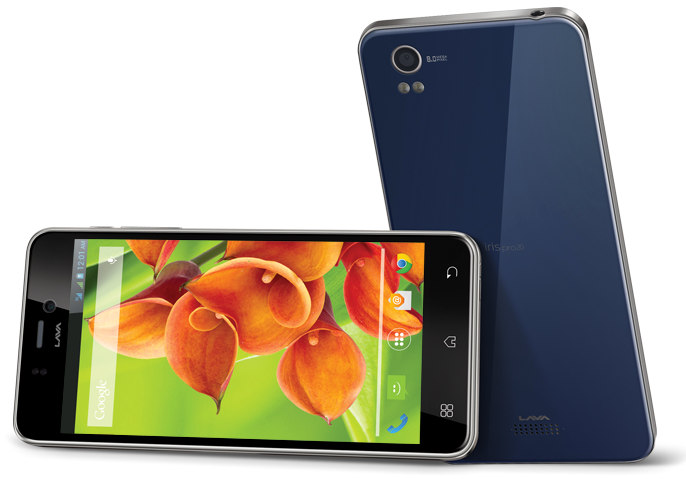
Lava has launched the Iris Pro 20, the latest smartphone in the Iris Pro 30. It has a 4.7-inch (960 x 540 pixels) qHD IPS display based on OGS technology and Corning Gorilla glass protection, powered by a 1.2 GHz quad-core processor and runs on Android 4.2 (Jelly Bean) OS. The phone is 7.7 mm thick and weighs just 112 grams. It has a 8-megapixel rear camera with dual LED flash and a 0.3-megapixel (VGA) front-facing camera.
It has CABC (Content Adaptive backlight control) screen brightness regulation technology that automatically reduces screen brightness for 30% more battery life, similar to the Iris Pro 30 that was launched earlier this year. It has dual SIM support with dual standby.
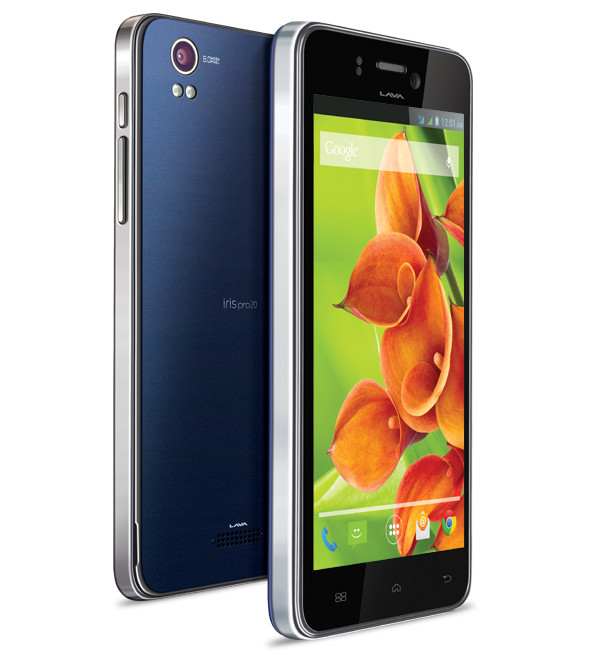
- 4.7-inch (960 x 540 pixels) qHD IPS display based OGS technology, Gorilla glass protection
- 1.2 GHz quad-core processor
- Android 4.2 (Jelly Bean)
- Dual SIM (normal + micro)
- 8MP rear camera with dual LED Flash
- 0.3 MP (VGA) front-facing camera
- Noise cancellation with dual microphones
- Dimensions: 138mm X 67.5mm X 7.7mm; Weight: 112 grams
- 3.5mm audio jack, FM Radio
- 1GB RAM, 4GB internal memory (2.43GB user memory), expandable memory up to 32GB with microSD
- 3G, WiFi 802.11 b/g/n, Bluetooth 4.0, GPS
- 2000 mAh battery
Nokia Lumia 1520 might get Miracast support, older WP devices have no chance
Microsoft introduced its latest mobile operating system, Windows Phone 8.1 a few days ago. Back at its announcement, the Redmond giant did mention that the newest OS supports Miracast, but we now know that the wireless screen casting service would require new hardware to work and will not be available on all WP 8.1 devices.
According to a tweet from Joe Belfiore, the head of Windows Phone group, Miracast would require new hardware and Nokia Lumia 1520 might be the only device to qualify. This also means that older Windows Phone devices have absolutely no chance of getting this new feature.
@sarang20067 WP8.1 supports Miracast but it will require new HW. MAYBE 1520 is new enough, I'm not sure. most WP8 hw won't be.
— joebelfiore (@joebelfiore) April 6, 2014
If you are wondering what Miracast is all about, then it is a
peer-to-peer wireless screen casting, which is formed via Wi-Fi Direct
connections that work similar to Bluetooth. This feature enables you to
wirelessly delivery audio and video to or from your desktops,
smartphones, tablets and other supported devices. Upcoming Android TV gets detailed before announcement
Leaked documents and screenshots obtained by The Verge reveal that Google is about to launch a new take on home entertainment. Dubbed Android TV, the service will take on the likes of Apple TV, Amazon Fire TV, and Roku.
According to the leaked documentation, Android TV is going to be “an entertainment interface, not a computing platform”. Its UI will be drastically different from the one found in Android smartphones and tablets. Google is reportedly hard at work on making the platform as easy for finding and enjoying content as possible.
The search giant has called for developers to build apps whose simplicity can match that of the scrolling cards-based Android TV interface. Some of the major apps which will be available include Google Play Movies, YouTube, Hangouts, Netflix, Pandora, Vevo, etc. Video games will also be supported.

Curiously, the report suggests that Android TV will be available alongside the massively popular, highly-affordable Chromecast HDMI dongle. This means that interested developers will potentially need to build two different interfaces for the duo of platforms.

Users will command the experience with a simple remote control. Support for gaming controllers will also be present, thus making the platform quite similar to Amazon Fire TV.
For the time being, there is no word on when Android TV will make its debut. Considering the look of the leaked screenshots, the wait might not be long.

No comments:
Post a Comment